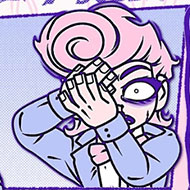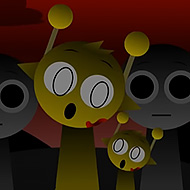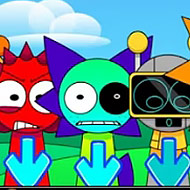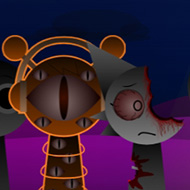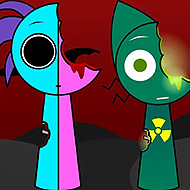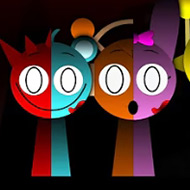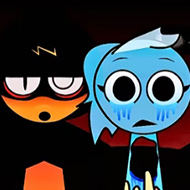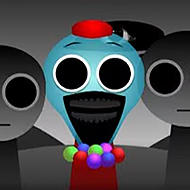Games Like Sprunki
Sprunki Spupil

Sprunki Spupil is a puzzle game that centers around visual memory, illusion-based navigation, and spot-based logic. Unlike most Sprunki games that emphasize shifting terrain, this title revolves around static boards that change not through movement, but through observation and gaze mechanics.
Seeing is Not Always Knowing
In Sprunki Spupil, levels appear stable—but everything changes depending on where and how long you look. Certain tiles appear only when you gaze at them for a specific amount of time, while others disappear when viewed directly. The game’s puzzles rely on the player’s ability to scan the board, commit visual patterns to memory, and solve logic paths while avoiding direct focus on sensitive tiles.
This mechanic creates a constant tension between vision and movement. Moving toward a door may make it vanish if you stare too long. Looking at a bridge may cause it to become intangible. The challenge becomes one of indirect awareness—learning how to use your eyes without “activating” traps. Some puzzles also introduce mirrored boards, where actions on the left side are reflected on the right, but only if those tiles remain unseen for long enough.
Vision-Based Gameplay Features
- Eye-sensitive platforms: These vanish or solidify depending on the direction of your last gaze.
- Mirage zones: Visually present elements that never actually exist unless you walk past them without looking.
- Pattern-memory gates: Doors that open only if the player memorizes a shape and repeats it through movement.
- Observer traps: Directly looking at an object can trigger instant failure in some advanced stages.
Sprunki Spupil invites players to reimagine control. Instead of simply moving through a space, they must regulate their awareness—remembering where to look, where to avoid, and what was real two seconds ago. Some of the hardest stages ask players to look at a pattern once, let it disappear, and then recreate it blindly. These challenges reward perception, discipline, and visual logic over trial-and-error movement.
How to Train Visual Control
- Scan and memorize: Don’t act until you’ve seen the entire map—most traps depend on gaze direction.
- Practice indirect movement: Use side angles and peripheral vision to avoid activating fragile tiles.
- Draw the board: In the most complex levels, writing down what you saw before it disappeared can help immensely.
- Use clone gaze: Later puzzles introduce clone vision—these act as secondary viewers who affect the board independently.
Sprunki Spupil challenges the concept of puzzle-solving by tying action to attention. It’s not just about what you do, but what you see, ignore, or remember. Every step is a test of patience and pattern recognition, where solving the puzzle begins long before movement occurs.
This game is a bold entry in the Sprunki series—focusing on passive control, visual illusion, and attention-based challenge. Players who enjoy mindful movement and complex perception puzzles will find Sprunki Spupil one of the most intellectually rewarding entries in the collection.
No tags found for this post.
There are no reviews yet. Be the first one to write one.
















